#Endangered Species Day
Text
Wake up, it’s Endangered Species Day!
The protected waters of the National Marine Sanctuary System provide safe haven for many endangered species, such as Hawaiian monk seals. By helping create safer habitats, the National Marine Sanctuary System gives endangered species the opportunities they need to regain a foothold.
Learn more about endangered species and this upcoming, monumental anniversary:
🎥: Matt McIntosh/NOAA
#EarthIsBlue#EndangeredSpecies#HawaiianMonkSeal#WildSanctuaries#Wildlife#Nature#Animals#CuteAnimals#Hawaii#Seal#MarineLife#Ocean#ESA50#Endangered Species Day#Endangered Species#ocean#science#national marine sanctuary#conservation
162 notes
·
View notes
Photo

[ A northern spotted owl in Oregon, photo courtesy of Kyle Sullivan. ]
“In the U.S., where 90% of the population was historically found, the federal government listed northern spotted owls as threatened in 1990. Despite vocal opposition from loggers, lawmakers levied the Endangered Species Act and other legislation to shut down logging in vast tracts of the owls’ remaining habitat, virtually overnight.
But neither Canada nor the province of British Columbia had comparable legislation; despite listing the owls as endangered in 1986, the government allowed old-growth logging to continue apace.
By the early ’90s, the spotted owl population in British Columbia was down to fewer than 100 breeding pairs, a fifth of what the population had been before colonization. The province pulled together a recovery team, and in 1997 it implemented a management plan that, it claimed, had a 60% chance of stabilizing, and possibly improving, the population. Of the more than 350,000 hectares (865,000 acres) set aside for owls, some was in existing parks, and in much of the rest, logging was still allowed.
Meanwhile, the owl population in British Columbia continued to spiral to fewer than 30 breeding pairs by 2002, and three years later, to just 22 owls, including 6 breeding pairs.
By 2006, an independent panel of scientists decided captive breeding was necessary, and the province opened a northern spotted owl captive-breeding program, the first of its kind in the world. To date, conservationists have taken a total of 10 owls, as well as a number of eggs, from the wild for captive breeding. Though progress has been slower than hoped, the captive population is now approximately 30 owls.
Joe Foy, a campaigner with the Wilderness Committee who has been working on spotted owl conservation for more than 30 years, says the crux of the problem is that provincial governments gave forestry precedence over wildlife conservation. According to British Columbia’s Forest and Range Practices Act, timber was always the most important value of the forests, allowing provincial regulations to constrain the impact that habitat protection for wildlife could have on timber supply. That, Foy says, is why we “ended up with a broken forest, and this species almost gone.”
Hobart says the decline in owls is symptomatic of wider imbalances in the landscape. The owls are one of the species, he says, “that we consider to be the messengers from the forest, from the water, from the sky.”
Logging is not the only reason northern spotted owls are now a hair’s breadth away from extirpation in British Columbia. Invasive barred owls (Strix varia), which are native to eastern North America but have been moving westward, are also muscling out spotted owls, and more frequent and intense forest fires due to climate change are adding pressure.
But logging was undoubtedly the catalyst for their decline, and the destruction is also impacting other species. Southern mountain caribou (Rangifer tarandus caribou) depend on lichen in old-growth forests for food in the winter. The marbeled murelet (Brachyramphus marmoratus), an endangered seabird, needs old-growth trees for nesting — and these are still being cut down. A recent study showed that logging even impacts salmon.
The old trees also store incredible amounts of carbon in their massive trunks and root systems; preserving standing forests is considered one of the cheapest and simplest ways to fight climate change.
- Excerpt from “One left: British Columbia’s last chance on northern spotted owls” by Ruth Kamnitzer.
#Endangered Species Day#old growth forest#conservation#Northern spotted owl#Spotted owl#Bird#EN#Article#Photo#Live specimen#Wild
71 notes
·
View notes
Text
May 19th is #EndangeredSpeciesDay, so for the blog here's a look at Van Gogh's two exotic animal paintings, one of a "green parrot" and the other of a "flying fox," and the real-life endangered species they depict:
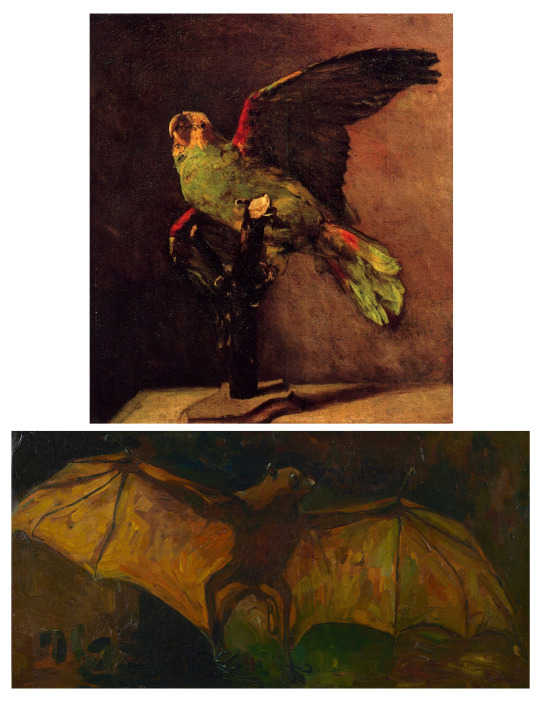
#1 The Green Parrot, 1886, private collection
#2 Flying Fox, 1884, Van Gogh Museum
#Van Gogh#Vincent Van Gogh#post impressionism#Dutch art#19th century art#European art#bat#megabat#flying fox#fruit bat#bird#birds in art#parrot#painting#oil painting#Van Gogh Museum#private collection#blog post#animals in art#Endangered Species Day#animal holiday#endangered species
26 notes
·
View notes
Text


🐼 Every day should be Endangered Species Day. Please help protect our planet’s endangered species and their habitats. ☮️ Peace… Jamiese of Pixoplanet
3 notes
·
View notes
Text
SAVE THE BILBIES!!! (Art from krome studio)

Today is endangered species day and I would like to draw attention to the Australian bilby who is sadly going extinct because of environmental pressures and being out competed by invasive rabbits not native to Australia. So please if you have a heart and wish to save thies little guys from the land down under check the link
#video games#ty the tasmanian tiger hd#ty the tasmanian tiger#bilby#endangered species#endangered species day#australian video games#australian animals#save the bilbies#bilbies#wwf#world wildlife day#world wildlife fund
2 notes
·
View notes
Photo

Prompted by a Discord server on Endangered Species Day, I wanted to share information about the African forest elephant, which is critically threatened with only around 30,000 left in the wild.
A species within western central Africa, they are very familial and the females will care for each others’ young, while young males herd away from the main group until mating season.
A keystone species, their pathways to mineral-rich waters allows for humans and other animals to reach deposits within these easily accessed waters, and their heavy diet allows for seeds to spread across their travels through their dung.
They have sadly been rapidly declining in number since the 1980s for a variety of reasons: deforestation for livestock farming, poaching for their ivory and bushmeat, along with being displaced due to conflicts. Adding to this is the already low reproductive rate among elephants, making numbers more difficult to bounce back from.
They are difficult to track due to living in dense foliage, but recent conservation efforts have made efforts to ban commercial trade over them, with the CITES agreement passed by Central African Republic, Democratic Republic of Congo, Gabon, Côte d'Ivoire, and Senegal.
3 notes
·
View notes
Text
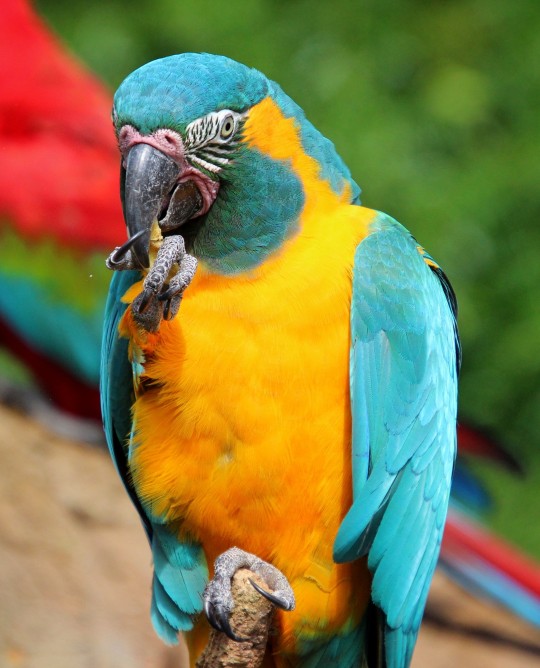
Blue-throated Macaw
Photo: LDeans
1 note
·
View note
Text

Today is Endangered Species Day. Be kind to Nature.
0 notes
Text
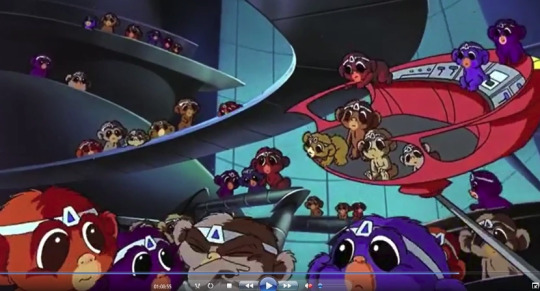
Happy Endangered Species Day!
(Please save the Grungees!)
1 note
·
View note
Photo

Happy Endangered Species Day!
(Please save King Louie!)
1 note
·
View note
Photo

Hunters and their dogs pose alongside the body of an Amur leopard. Overhunting of both the leopards themselves and their prey, along with habitat loss and fragmentation, have pushed this subspecies to the brink of extinction. The current wild population stands at no more than 100 individuals. [ x ]
62 notes
·
View notes
Text
#EndangeredSpeciesDay: #DYK Andy Warhol (American, 1928-1987) made two screenprint series in the 1980s focused on threatened animals?
1st was Endangered Animals, 1983:
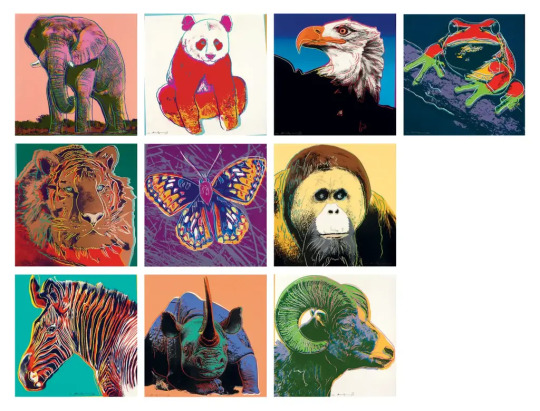
African Elephant, Giant Panda, Bald Eagle, Pine Barrens Tree Frog, Siberian Tiger, San Francisco Silverspot Butterfly, Orangutan, Grevy’s Zebra, Black Rhinoceros, Bighorn Ram.
2nd was Vanishing Animals, 1985:
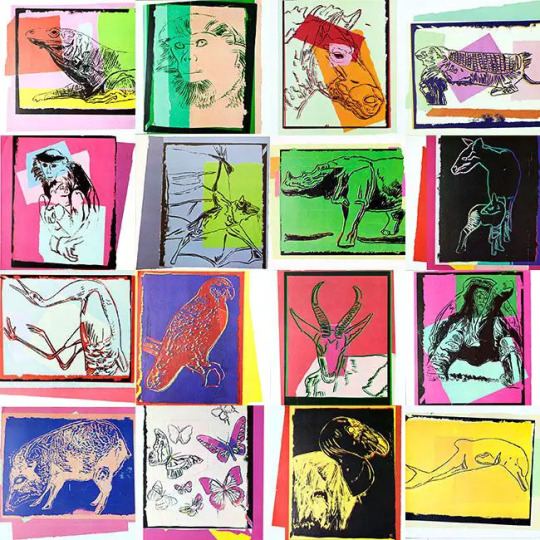
Komodo Monitor, Douc Langur 1, Mongolian Wild Horse, Mouse Armadillo, Douc Langur 2, Bats, Sumatra's Rhinoceros, Okapi, Whooping Crane, Puerto Rican Parrot, Sommerring's Gazelle, Galapagos Tortoise, Giant Chaco Peccary, Butterflies, California Condor, La Plata River Dolphin.
More about both series here:
#Andy Warhol#Warhol#pop art#screenprint#modern art#20th century art#American art#print#1980s#Endangered Animals series#Vanishing Animals series#animals in art#Endangered Species Day#animal holiday
20 notes
·
View notes
Text
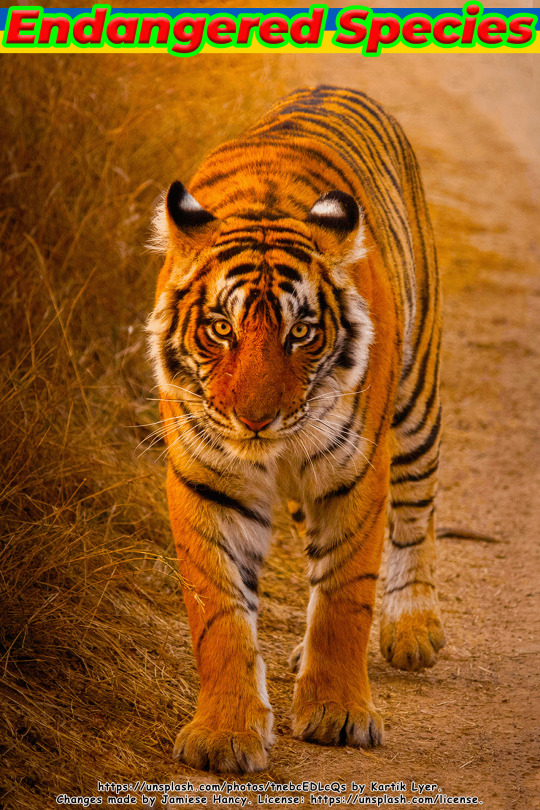

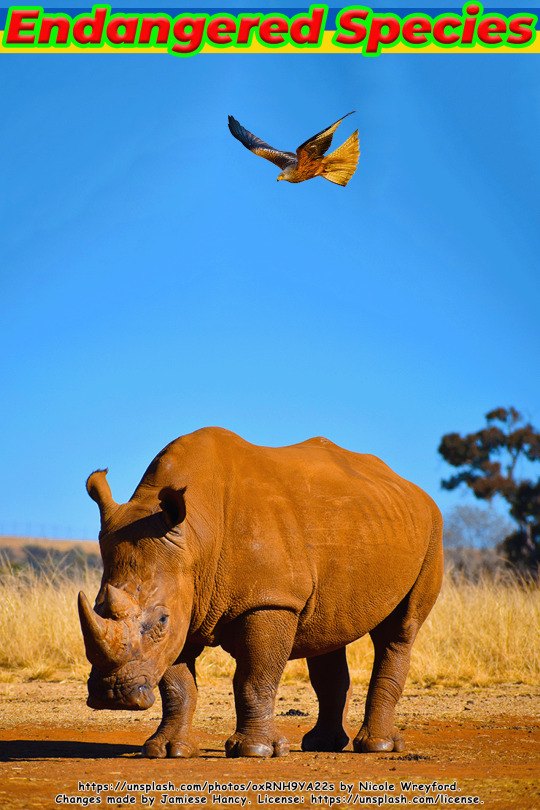

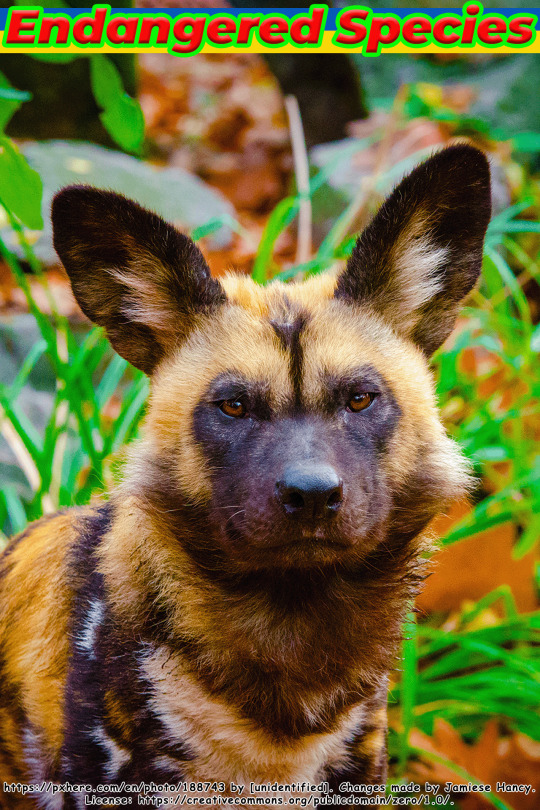





0 notes
Text
Happy Earth Day!

We share this beautiful planet with over two million other species, from wasps the size of a grain of dust to whales larger than an office building. Yet, many of these species now face extinction due to the ways in which we humans have modified the planet to suit our needs. According to the International Union for the Conservation of Nature (IUCN), 13% of birds, 21% of reptiles, 27% of mammals, 37% of sharks, and 41% of amphibians are currently endangered, and some estimates suggest that 28% of all species on Earth are at risk of extinction in the near future. Imagine you woke up tomorrow and more than a quarter of every plant, animal, and fungus, from the elephants at the zoo to the earthworms beneath the soil, simply vanished, never to be seen ever again. If we choose to continue treating our planet so poorly, this will become a reality.
Here at Consider Nature, we believe the best way to protect our planet is to arm ourselves with knowledge! Over the years, we have written many articles on some of Earth’s coolest, weirdest, and most-endangered species, in the hope of inspiring readers to step up to the plate and protect biodiversity. I hope you will spend a few minutes of your Earth Day today reading about some of the species we believe are worth saving.

Zacaton grasslands in central Mexico, home to the Zacatuche, or volcano rabbit. Image credit: Jurgen Hoth
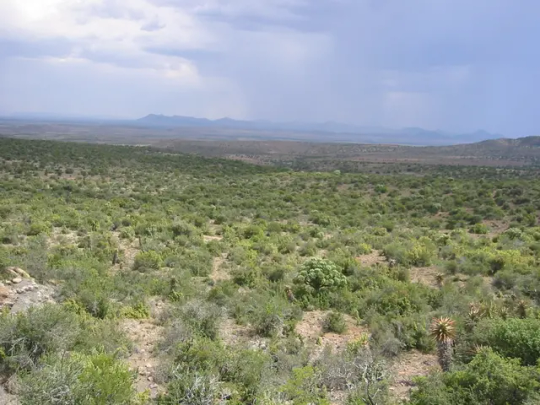
The Succulent Karoo, one of the most biodiverse ecosystems on Earth and home to the Karoo Padloper. Image credit: Tjeerd Wiersma under CC BY-SA 2.0.
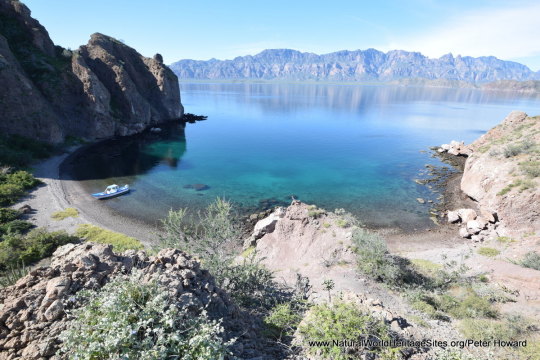
The Gulf of California, home of the critically endangered Vaquita. Image credit: Natural World Heritage Sites.
659 notes
·
View notes
Video
To learn more about what you can do to help visit: https://wildanimalhealthfund.org/.../10-ways-you-can.../
#Endangered species#endangered species awareness#endangered species day#sea turtles#panthers#blue whale#penguin#rhino#red panda#endangered#dorr township library
0 notes
Text
Umbro X Art Of Football 2022 Endangered Species Day Shirts
Umbro X Art Of Football 2022 Endangered Species Day Shirts
Special football kit news as two Umbro X Art Of Football 2022 Endangered Species Day shirts have been unveiled.
On the 20th May 2022 it’s Endangered Species Day and so Art Of Football and Umbro have joined forces in a special collaboration to highlight two of the most endangered animals, the rhino and the dart frog.
Art Of Football X Umbro Rhino Shirt
The AOF X Umbro Rhino shirt bares a…

View On WordPress
1 note
·
View note